
Lago Atitlan, Guatemala.
How I bought a species
| In October 2003, I was driving around Guatemala,
looking for plants, animals, old cities, and archaeological sites. It is the most
interesting place in Central America in terms of cultural and biological diversity. |
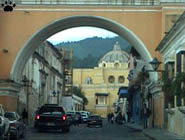 |
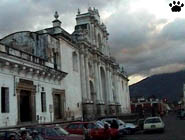 |
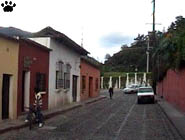 |
| Streets of Antigua Guatemala. |
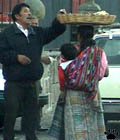
Street vendor, Antigua. |
Thousands of tourists visit Guatemala,
but very few of them ever stray away from the "tourist traps" of Antigua,
Lago Atitlan, and (for the more adventurous ones) Tikal. True, it is not the easiest
country to travel in, but I found that it no longer fits the stereotype of thoroughly
corrupt and dangerous "banana republic". I actually had more problems
with corrupt police in supposedly civilized Belize and parts of Mexico. |
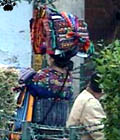
Street vendor, Antigua. |
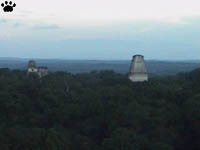
Maya temples in the rainforest, Tikal. |
As in many other countries, "touristic"
parks and reserves are well-protected, while most of the land between them is
being rapidly deforested by the exploding population. |
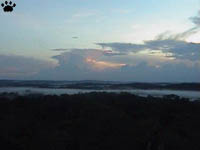
View from a temple, Tikal. |
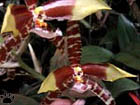 |
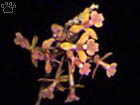 |
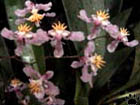 |
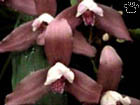 |
| Cloud forest orchids, Guatemala |
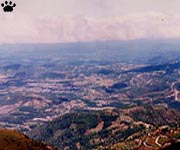
Deforested highlands, Guatemala. |
Thanks in part to the Catholic Church,
population in El Salvador and some parts of Guatemala has grown sixfold in the
last 50 years. As a result, all natural vegetation is gone from much of the land,
especially in the heavily populated highlands. |
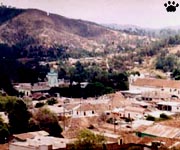
City of Chiantla, Guatemala. |
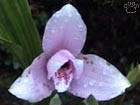 |
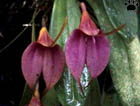 |
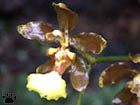 |
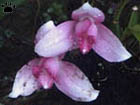 |
| Cloud forest orchids, Guatemala |

Mountain mists have once nourished splendid
cloud forests over much of Guatemalan
Highlands, but now little remains of them. |
Cloud forests have suffered the most.
They are mostly made up of oaks, highly valued for timber, so most of them have
been logged and converted to fields, pastures or secondary growth. |
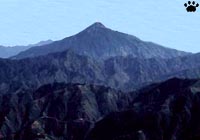
Even Volcan Tajumuco (4250 m/14,000'),
Central America's highest peak, is
now deforested all the way to the summit. |
 |
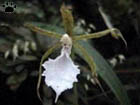 |
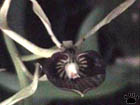 |
 |
| Cloud forest orchids, Guatemala |
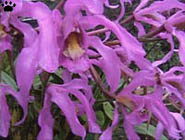
Cloud forest orchid, Guatemala. |
This is very unfortunate, because cloud
forests harbor much of the regional biodiversity, including thousands of endemic
species, from huge horned guans (Oreophasis derbianus) to tiny fungae,
mites, and targidrates. |
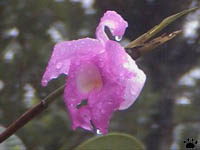
Cloud forest orchid, Guatemala. |
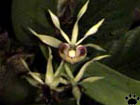 |
 |
 |
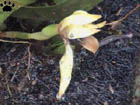 |
| Cloud forest orchids, Guatemala |
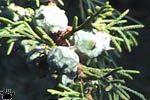
Cones of Lusitania cypress. |
There are considerable reforestation
efforts in the region, but they mostly create open forests of various pines and
Lusitania cypress (Cypressus lusitanicus), not suitable for most of local
plants and animals. |
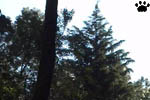
Pine-cypress forest. |
 |
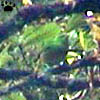 |
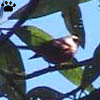 |
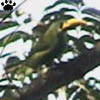 |
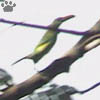 |
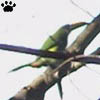 |
| Birds of cloud forests are notoriously
difficult to photograph. Left to right: yellow-winged tanager (Thraupis abbas),
blue-crowned chlorophonia (Chlorophonia occipitalis), pink-headed warbler
(Ergaticus versicolor), emerald toucanet (Aulacorhynchus prasinus,
3 photos). |
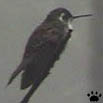
Lampornis
viridipallens,
Sierra de los
Cuchumatanes. |
As for various environmental organizations,
they mostly care about birds and large mammals, while all the small things like
shrews, or insects, or mosses, don't get much attention, and quietly slide towards
extinction. For example, many endemic salamanders of Guatemala and Southern Mexico
haven't been seen since the early 20th century, in part because nobody bothered
to check on them and see if they needed protection. Some are probably extinct
by now. |
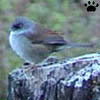
Yellow-eyed junco
(Junco phaeonotus),
Sierra de los
Cuchumatanes. |
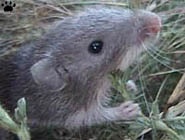 |
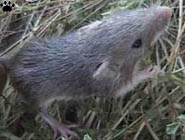 |
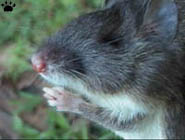 |
| Spiny pocket mice of Guatemala, left
to right: Liomys salvini (2 photos), Heteromys desmarestianus. |

Peromyscus zarhynchus,
Villa Luz, Chiapas. |
One such unappreciated and unprotected group is
rodents. Nine species are endemic to the mountains of Guatemala and adjacent Chiapas,
Mexico, including two species of deer mice (Peromyscus) shown here. |

Peromyscus grandis, Biotopo Mario
Dary Rivera, Guatemala. |
 |
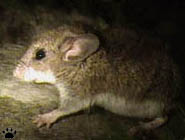 |
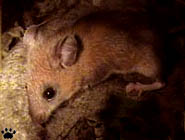 |
| Harvest mice of Guatemalan mountains, left to
right: Reithrodontomys fulvescens, R. sumichrasti, R. tenuirostris. |
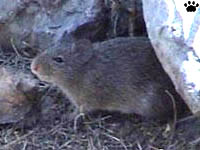
Cotton rat Sigmodon alleni,
Monte Alban, Oaxaca. |
The rarest and most local of them all is Maya
mouse (Peromyscus mayensis), known only from a tiny area in Sierra de los
Cuchumatanes in western Guatemala, above the town of San Mateo Ixtatan. |
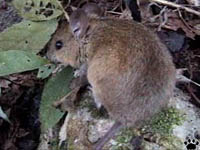
Rice rat Oryzomys alfaroi,
Sierra de los Cuchumatanes. |
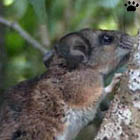 |
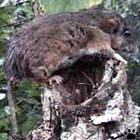 |
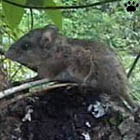 |
 |
| Deer mice of Guatemala and Southern
Mexico, left to right: P. stirtoni, P. aztecus, P. leucopus,
P. melanophrys. |
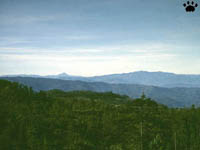
Sierra de los Cuchumatanes. |
Sierra de los Cuchumatanes is a high plateau,
not unlike the Altiplano of South America. The plateau itself has only scattered
trees, but the outer slopes used to be covered with lush cloud forests. |
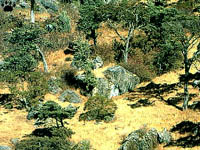
Plateau vegetation, Sierra de los Cuchumatanes. |
 |
 |
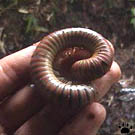 |
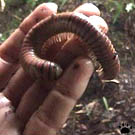 |
| Plants, Sierra de losCuchumatanes. |
Millipede, Sierra de los Cuchumatanes. |
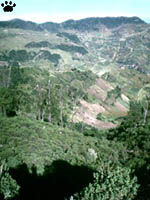
Sierra de los Cuchumatanes. |
Unfortunately, these forests are now mostly replaced
with fields, pastures, and secondary pine forests. The rarest forest type is also
the only one that Maya mouse can live in: tall oak-dominated forest with a thick
layer of dead leaves on the ground. Such forests only existed in an extremely
narrow elevation range, at 2900-2950 m (9670-9830'). I spent a few days looking
for them, but found only scattered oak trees and lots of fresh stumps. |
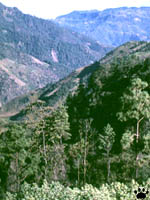
Sierra de los Cuchumatanes. |

My forest, Sierra de los Cuchumatanes. |
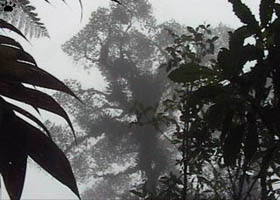
My largest oak, Sierra de los Cuchumatanes. |

A medium-size oak,
Sierra de los Cuchumatanes. |
Finally, I found a tiny patch of cloud forest,
50x20 m (170x65') in size, on a very steep slope at just the right altitude. It
was in process of being logged for firewood, but one large and a few medium-size
oaks were still standing. After four hours of bargain, I convinced the landowner
to sell me the forest for US$100, registration tax and fencing included. I was
unemployed at the moment and didn't have any spare money, but I just couldn't
stand there and watch that last little grove being destroyed. |
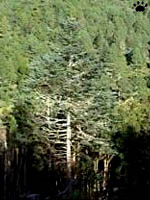
My largest fir tree,
Sierra de los Cuchumatanes. |
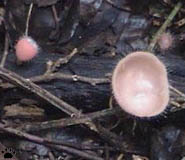 |
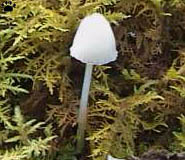 |
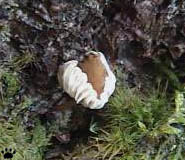 |
| My mushrooms, Sierra de los Cuchumatanes. |
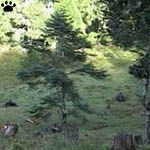
Guatemalan fir at the edge of the
clearcut, Sierra de los Cuchumatanes. |
In addition to epyphyte-covered oaks, the forest
had at least ten other tree species, including a few very rare Guatemalan firs
(Abies guatemalensis), and an outstanding variety of other plants, fungi,
birds, insects, millipedes, and snails. It was hard to believe that so much diversity
could be packed in such a tiny area. |
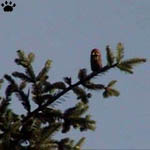
Guatemalan fir cone,
Sierra de los Cuchumatanes. |
 |
 |
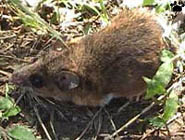 |
| Rodents of Sierra de los Cuchumatanes,
left to right: Habromys lophurus (2 photos), P. mexicanus. |

Identifying rodents in the wild
without trapping them can be
tricky. This is Chaetodipus
pictus pocket mouse. |
The main question, of course, was whether Maya
mice lived in the forest or not. I had to spend a few very cold nights searching
the place. I also set a few live traps, and checked them every two hours to make
sure the trapped rodents didn't get cold in there. Trapping was necessary, because
100% certain identification of rodents is often possible only in the hand. |

Pygmy rice rat Oligoryzomys
fulvus seen while spotlighting.
This species is partly arboreal.
Mar Muerte, Oaxaca. |
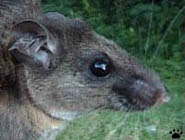 |
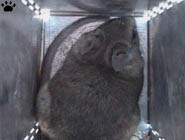 |
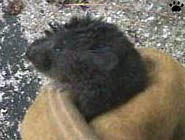 |
| Live-trapped rodents of Mexico and
Guatemala, left to right: deer mouse P. guatemalensis, woodrat Neotoma mexicana, vole Microtus quasiater. |
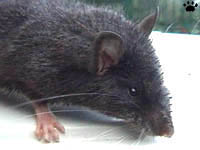
Maya mouse, Sierra de los Cuchumatanes.
Unless I missed some forest patches, the
remaining range of this species is less than
1000 sq. m, and the global population is
almost certainly less than 20. |
And, believe it or not, I found it! It is a weird
creature, looking more like a shrew than a mouse, probably because it is mostly
insectivorous. It is almost black, and can be very difficult to locate at night
even in such a small area as my forest. |

Maya mouse, Sierra de los Cuchumatanes. This
is probably the first photo ever taken in the wild,
and possibly the first photo at all. This species
lives in the thick layer of dead leaves, and likes
to move along rotting logs and fallen trees. |
 |
 |
 |
 |
 |
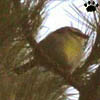 |
| Birds of Sierra de los Cuchumatanes,
left to right: chestnut-capped brush-finch (Atlapetes brunneinucha), brown-backed
solitaire (Myadestes obscurus), golden-browed warbler (Basiletereus
belli, 3 photos), rufous-capped warbler (B. rufifrons). |
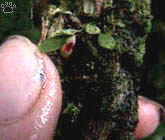
Tiny orchid plant with a flower,
Sierra de los Cuchumatanes. |
It's been known since the 1960-s that Maya mouse
was in danger. But, being a small unpopular animal, it wasn't formally listed
as endangered or threatened until a few years ago (not that it would've changed
anything). Sierra de los Cuchumatanes is supposed to be a Nature reserve, but
there's no actual protection. |
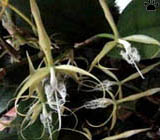
Cloud forest orchid,
Sierra de los Cuchumatanes. |

My forest, Sierra de los Cuchumatanes. |

View from my forest, Sierra de los Cuchumatanes. |
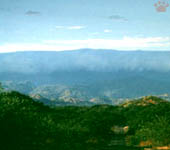
Fog rolling into the mountains,
Sierra de los Cuchumatanes. |
All that stands between this creature and extinction
is a bunch of "private property protected by landmines" signs I've posted,
and the honesty of the owner of the surrounding land. The forest might be logged
by now. And it might be too small to support a viable population. Well, at least
I tried to do something. Did you? |
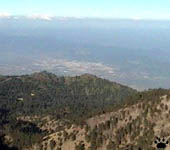
View from the edge of the plateau,
Sierra de los Cuchumatanes. |
|

Police team, Huehuetenango, Guatemala.
|
2008 Update Home |
|